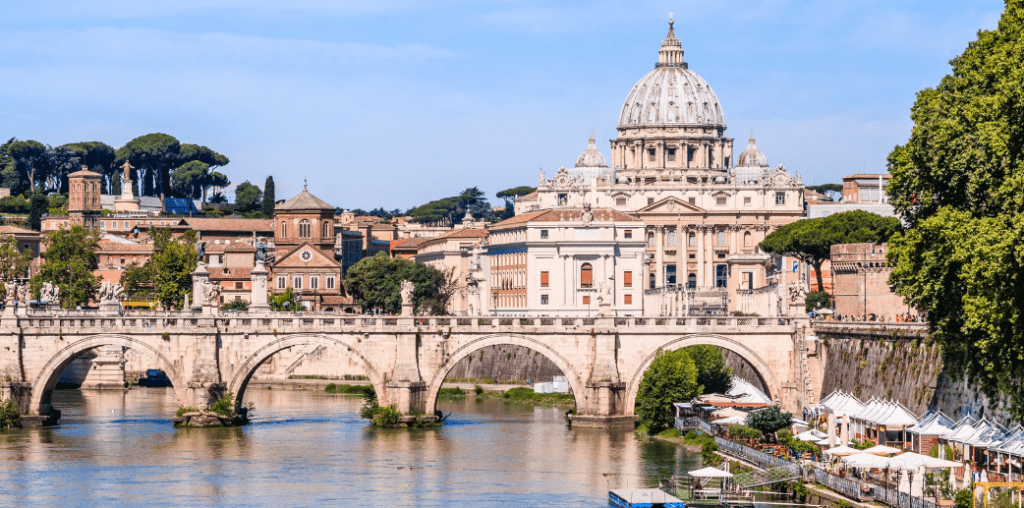There's the Amsterdam in guidebooks — and then there’s the Amsterdam that locals love. The trick...
Travel Guides
Rome feels like a living museum, brimming with stories just waiting to be uncovered. Let’s explore some fun facts that highlight what makes Italy's capital so unique.


Rome, the Eternal City, is brimming with history, culture, and surprises around every corner. From ancient ruins to delicious cuisine, there’s so much more to this iconic city than meets the eye.
Ready to discover some fun facts about Rome? These intriguing tidbits will spark your curiosity and might even inspire your next trip!
Rome is famous for its incredible gelato, and the city boasts over 1,500 gelaterias! This creamy dessert has a rich history in the city, dating back to ancient times when frozen desserts were made by mixing ice with honey and fruit. Today, you can find a vast array of flavors, from classic choices like chocolate and pistachio to more adventurous options like tiramisu and ricotta with fig.
Nestled within Rome is Vatican City, recognized as the smallest independent state in the world, measuring just 44 hectares (about 110 acres). This unique city-state is home to the Pope and serves as the spiritual and administrative center of the Catholic Church. Beyond its religious significance, Vatican City is a treasure trove of art and history, housing masterpieces such as the Sistine Chapel, with its breathtaking ceiling painted by Michelangelo.
Legend has it that Rome was founded by the twin brothers Romulus and Remus, who were famously raised by a she-wolf. According to myth, after Romulus fought and killed Remus, he went on to become the first king of Rome.
This captivating tale not only provides insight into the city’s origins but has also become a symbol of strength and resilience that resonates with Romans to this day. You can find references to these legends throughout the city, adding depth to your exploration of Rome’s rich history.
Rome's legendary foundation on seven hills — Palatine, Aventine, Capitoline, Quirinal, Viminal, Esquiline, and Caelian — plays a significant role in the city's ancient heritage. Each hill boasts its own unique history and character:
Rome is often called the “City of Fountains," boasting over 1,500 of them beautifully scattered throughout the city. Among the most famous is the stunning Trevi Fountain, where tossing a coin over your left shoulder is believed to ensure your return to Rome — a fun tradition that draws visitors from all corners of the globe.
Each year, around €1.5 million is tossed into the Trevi fountain, and this money is donated to charity, adding a feel-good element to your wish-making.
When it comes to pizza, Rome has its own unique style that sets it apart from the thick-crust varieties enjoyed elsewhere. Known as pizza al taglio, or pizza by the slice, it’s typically baked in a rectangular tray, giving it a delightfully crunchy crust and generous amounts of toppings.
Pizza al taglio can be found in numerous spots throughout the city, making it a popular choice for a quick and delicious bite. Many locals grab a slice on the go, contributing to the lively street atmosphere and offering an authentic taste of Roman culture.
The Pantheon is one of Rome's most remarkable architectural achievements. It holds the title of the oldest continually functioning building in the city, dating back to around 126 AD. What makes the Pantheon truly unique is its massive dome, which features a central oculus that allows natural light to flood the interior.
This ingenious design not only creates a stunning visual effect but also serves as a rain drainage system. Visitors are often blown away by how well-preserved the structure is, and the sheer size of the dome continues to inspire awe in architects and tourists alike.
In Rome, cats are much more than just pets; they hold a special place in the hearts of locals. The city is known for its friendly feline population, particularly around ancient ruins and cat sanctuaries.
Places like Largo di Torre Argentina are famous for their colonies of cats lounging among the remnants of history. The locals take great care of these cats, providing food and shelter.
With over 900 churches, Rome boasts the highest concentration of churches in the world. Each church tells its own story, featuring stunning frescoes, intricate architecture, and priceless art. From the majestic St. Peter's Basilica to the charming hidden gems scattered throughout the city, wandering through Rome feels like stepping into a living museum.
While Italian is the official language, the people of Rome often speak a unique dialect called Romanesco. This lively variation of Italian is rich with local expressions and phrases that give it a distinct flavor.
Staying connected while you explore Rome is essential for navigating the city, staying in touch with loved ones, and booking activities on the go. eSIMs provide a convenient way to access the internet without the hassle of changing physical SIM cards.
Here’s a roundup of the top eSIM providers available in Italy, highlighting their advantages and disadvantages to help you make the best choice for your visit.
| Provider | Pros | Cons | Price | |
| Holafly | Unlimited data, excellent customer support | No hotspot sharing, pricey | From $6.90 | |
| Jetpac | User-friendly app, simple setup | Only 3G/4G speeds, no unlimited data plans | From $1.00 | |
| Airalo | Reliable coverage, option for hotspot sharing | No unlimited data option, unreliable customer service | From $4.50 | |
Rome is over 2,700 years old, with its legendary founding date traditionally set in 753 BC. This rich history makes it one of the oldest continuously inhabited cities in Europe.
When visiting Rome, you shouldn't miss the Colosseum, the Vatican, and the Trevi Fountain. For a well-rounded experience, consider a Rome itinerary that includes these iconic landmarks as well as hidden gems like the charming Trastevere neighborhood and the viewpoint at Palatine Hill.
The Tiber River flows through Rome, serving as a significant geographic feature in the city’s history. The river has witnessed the rise and fall of empires and continues to be a key part of Rome's landscape today.

